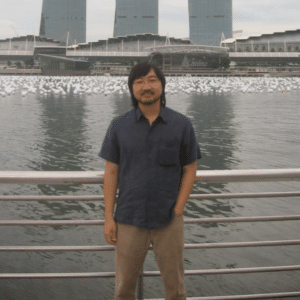
1) Know your history!
A previous article in this series suggests that we “shouldn’t explain certain words,” and gives as a rationale the notion that “[i]n today’s post-truth age of values over verities, it has become clearer….that humans cherish meaning as much as, if not more, than facts.” Interestingly, we reach the same conclusion if we know a basic fact about the practice of societies striving for congruence between language, culture, and territory. This was a regime that Europe first visited on itself during the Romantic era and then imposed by imperial fiat around the world. European multilingualism was itself submerged by this––a letter written in 1403 to King Henry IV by his lieutenant, Richard Kingston, the Dean of Windsor, for instance, features English and French––but increasingly as we leave behind the regime of Euromodernity other lifeways can now be endorsed. In this light, one sociolinguist has proposed the notion of “Southern Multilingualism” (SM)* to denote non-Romantic (i.e., non-Herderian) practices in the Global South. SM comes in many shapes and sizes. In certain aboriginal communities for instance, exogamy is routinely practiced, so learning and using different languages goes with extending one’s cultural and biogenetic ambit. In other societies, portmanteau “languages” develop over time as a dominant lingua franca, say, English, gets transformed and denatured by the addition of Malay, Chinese, and Indian terms and phrases. Individuals in Singapore and Malaysia will, for instance, use such transformed Englishes together with their heritage tongues. On the subcontinent, “hug-me” is second-nature to many individuals (see number three below). I believe that SM is a challenge that translation needs to grasp by the jelatang. At any rate, the concept helps to validate the work that we do.
* Heugh, Kathleen. “Re-Placing and Re-Centring Southern Multilingualisms: A De-Colonial Project.” Entangled Discourses: South-North Orders of Visibility. Ed. Caroline Kerfoot and Kenneth Hyltenstam. Routledge, 2017. 209-229.
2) Learn some creative writing conventions.
English, my target language, has some well-established conventions about what constitutes “good” writing. Yes, they can be violated for aesthetic effect by a Toni Morrison or a Cormac McCarthy, but to do that they (and us) need to know these conventions. In The Art of Fiction, John Gardner notes that some of the more common forms of clumsy writing are, “inappropriate or excessive use of the passive voice, inappropriate use of introductory phrases containing infinite verbs, shifts in diction level or the regular use of distracting diction, lack of sentence variety, lack of sentence focus, faulty rhythm, accidental rhyme, needless explanation, and careless shifts in psychic distance” (99). Luckily for us, he also explains how we can fix these errors.
Gardner, John. The Art of Fiction: Notes on Craft for Young Writers. Vintage, 1991.
3) Read!
This has been said before by other commentators but bears repeating. Read a range of authors in the target language so that you can grow your translation toolkit. Some of my favourites are Raymond Carver, Ursula Le Guin, and Doris Lessing. Carver is noted for his Hemingway-like sparse, laconic writing. A good antidote to that is the ardent prose-style below:
“Because it was only me, she could prattle on in Bombay’s garbage argot, Mumbai ki kachrapati baat-cheet, in which a sentence could begin in one language, swoop through a second and even a third and then swing back round to the first. Our acronymic name for it was Hug-me. Hindi Urdu Gujarati Marathi English. Bombayites like me were people who spoke five languages badly and no language well.”
Salman Rushdie, The Ground Beneath Her Feet
4) Comparative language studies
The tongues in the language pair that I work with, English and Chinese, are considered to be vastly different from each other and hence difficult to translate on a word for word or even sentence for sentence basis. Comparative language studies can help us get a handle on that difficulty. This may get technical but is, I believe, worth it. Learning that English is “hypotactic” and Chinese “paratactic” has, for instance, helped me to understand why English puts a premium on cohesion (connectives that spell out the relationships between different clauses) while Chinese in contrast feels “loose” and “unstructured.” This is not to say that different languages segment us into different “realities,” only that drawing on such studies can allow us to better specify or frame the challenges that we face, and thus perhaps to surmount them more easily.
The classic text on cohesion is Cohesion in English, by M.A.K. Halliday and Ruqaiya Hasan, Routledge, 1976.
5) Rest and recreation
One way to rapidly improve second or heritage language competence is to watch YouTube movie re-cap sites with the caption function switched on. This way we both hear and “see” the source language. If done for recreation purposes it doesn’t feel like a chore.

 Wai-chew Sim obtained his BA (Honours) from the University of East Anglia and his PhD from the University of Warwick. His work has appeared in Textual Practice, The Journal of Commonwealth Literature, and CLCWeb: Comparative Literature and Culture. His English translation of Singapore writer Joo-Ming Chia’s sinophone novel, Exile or Pursuit [放逐与追逐] was published by Balestier Press in 2019. Website
Wai-chew Sim obtained his BA (Honours) from the University of East Anglia and his PhD from the University of Warwick. His work has appeared in Textual Practice, The Journal of Commonwealth Literature, and CLCWeb: Comparative Literature and Culture. His English translation of Singapore writer Joo-Ming Chia’s sinophone novel, Exile or Pursuit [放逐与追逐] was published by Balestier Press in 2019. Website
This residency is generously supported by the National Arts Council of Singapore.
You may also like...
Five top tips for writing for your own enjoyment
Author, editor and NCW virtual resident Tse Hao Guang offers advice to writers hoping to write in a way that’s inventive, surprising and centres their own happiness.

19th September 2023
‘Norwich: An Education’ by Gabriela Manova
‘Even in moments of uncertainty when I felt adrift or disconnected, I gradually appreciated that meaning could be discovered in unexpected places.’

16th August 2023
17 tips for writing creative non-fiction
Writers and editors give their advice on writing non-fiction and tackling its challenges.

30th July 2022






